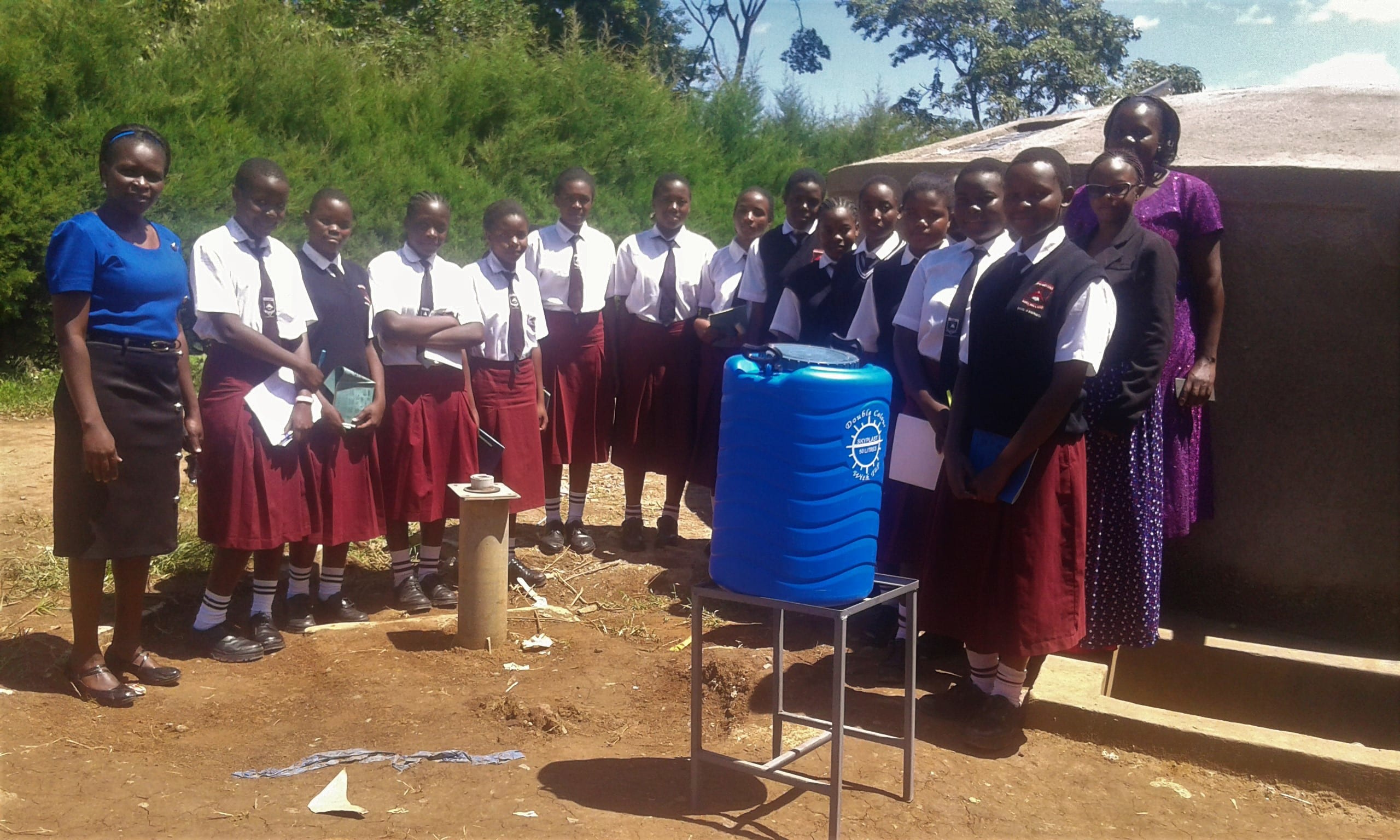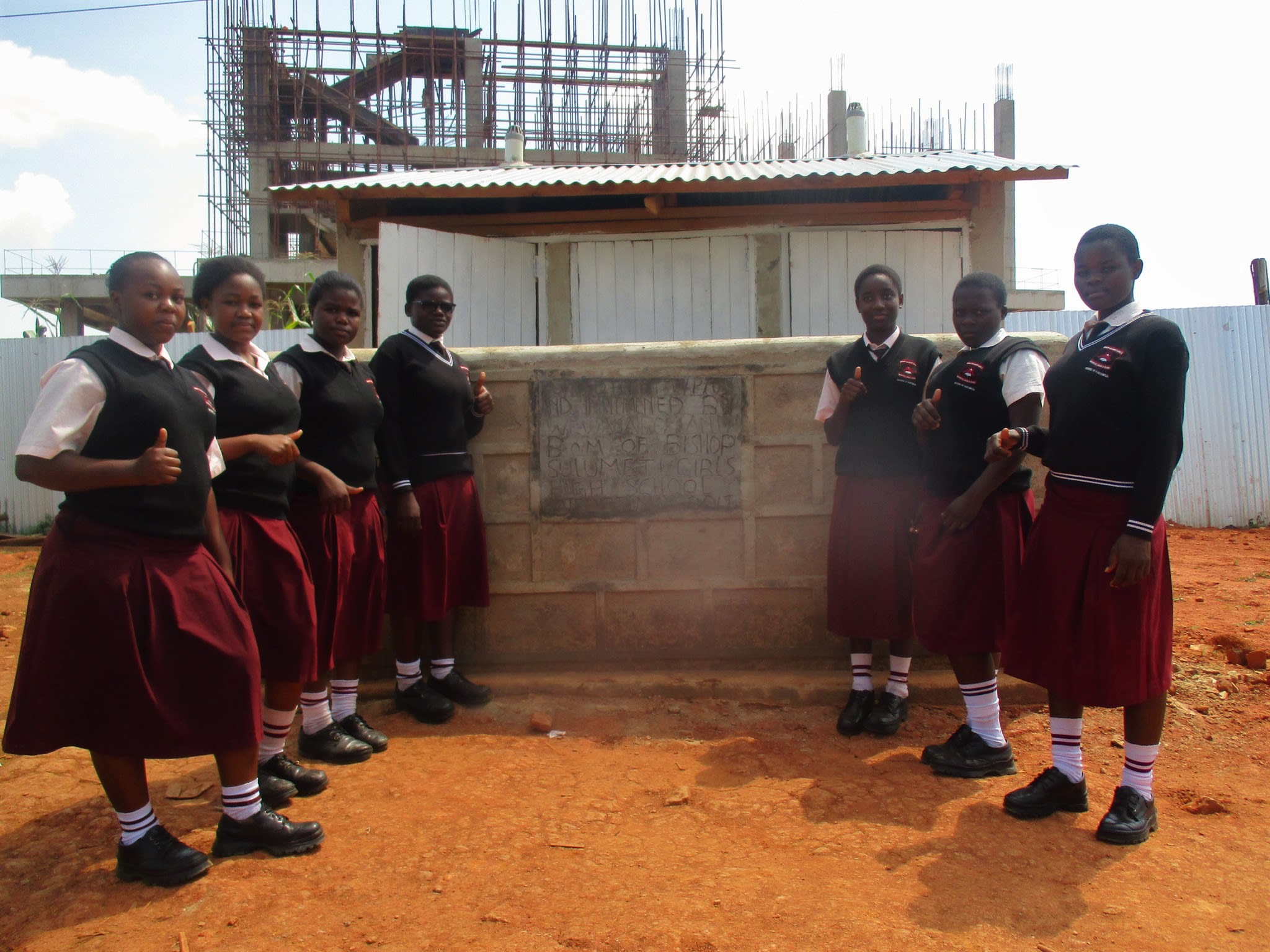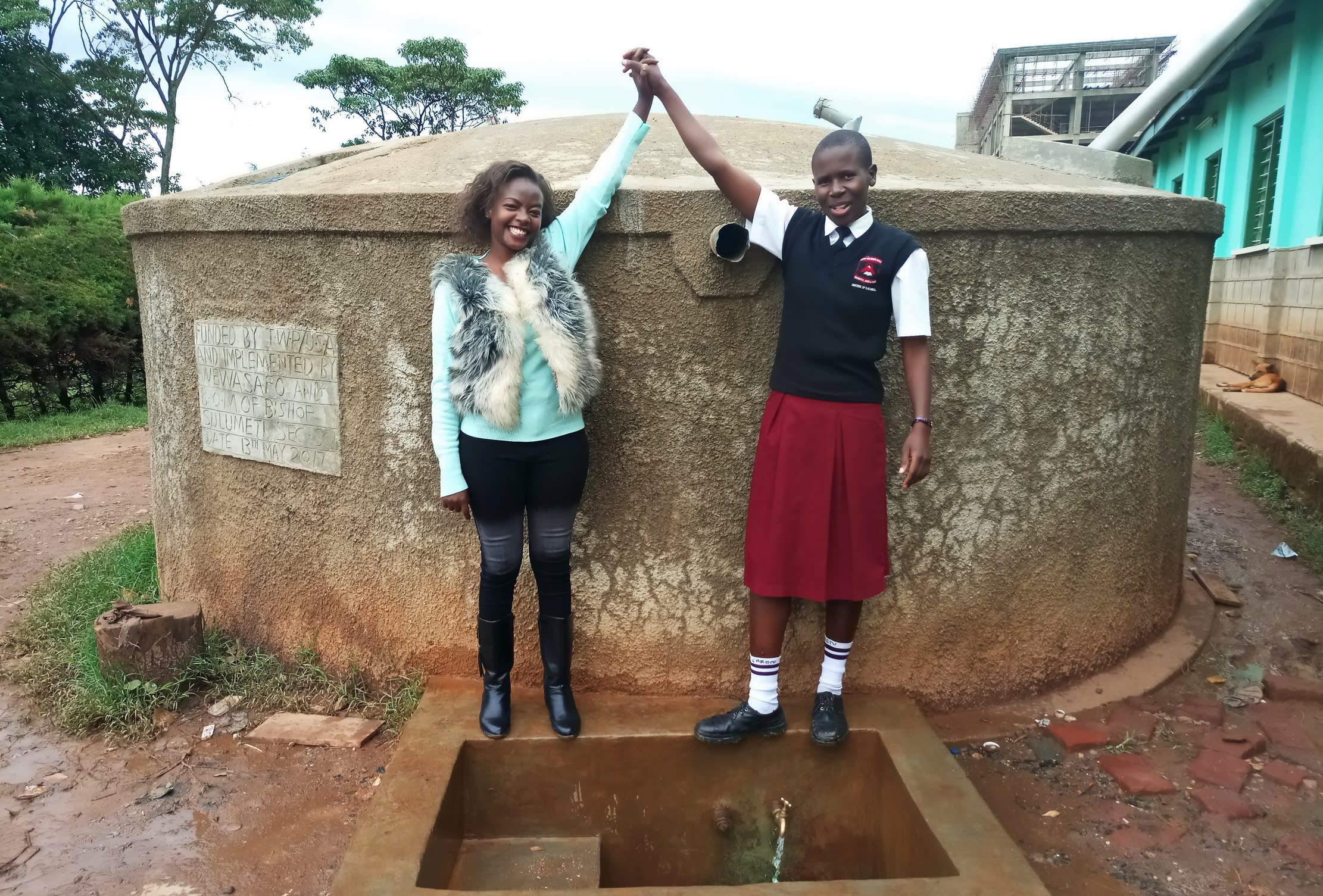This project is a part of our shared program with Western Water And Sanitation Forum (WEWASAFO). Our team is pleased to directly share the below report (edited for clarity, as needed).
Welcome to the School
Bishop Sulumeti Girls Secondary School is located in Shitaho Village, Kenya. The school was started in 1982 by a Roman Catholic bishop named Sulumeti, and the school was named after him. In 1998, the school introduced boarding so it became both a day and a boarding school; later in 1986 Bishop Sulumeti handed over the school to the government to be sponsored fully by the Catholic Church. This is the first year, 2017, that the school has become just a boarding school.
The school now has a total student population of 620, and they were still admitting form one students at the time of our survey. The school employs a total of 32 teachers and 25 subordinate staff.
(Editor's Note: While this many people may have access on any given day, realistically a single water source can only support a population of 350-500 people. This community would be a good candidate for a second project in the future so adequate water is available. To learn more, click here.)
The girls wake up at 4 AM every morning to wash up in preparation for morning study hall that goes from 4:30 AM to 6 AM. At 6, they go to eat breakfast before chores which entail cleaning the classrooms, dorms, teacher staffrooms, principal's office and other sections of the school. At 8 AM they resume their normal classes. After lunch, afternoon lessons will go uninterrupted until 4:30 PM when students break for games. The bell for supper rings at 5. Night classes run from 6 to 9 for form one and form two classes, but the upper classes remain in class until 11 PM.
Water Situation
The school received a borehole in 2010, but it was not installed correctly and issues quickly developed. The borehole started drying up in the hottest, driest seasons, and then after another year never recharged and fully stopped serving the school.
To deal with this loss, administration started purchasing plastic tanks to capture rainwater. Over the past couple of years they've been able to install five small to medium-sized rainwater storage containers, split between the boarding section and the classrooms.
If each person uses 20 liters a day, the school would need over 90,000 liters of rainwater each week! That’s why this project is so integral to the success of Bishop Sulumeti and its students.
Sanitation Situation
The school has a total of 10 functional pit latrines at the school section and 10 others in the boarding section. Since there are over 600 girls here, there are always long lines for the latrines.
There are a couple of hand-washing stations, but not nearly enough for the number of girls here. Nor is there any soap!
The girls have partitioned bathing rooms at the boarding section, totaling 28, and a large field where many other girls use to take sponge baths.
There are six wire lines where the girls hang their clothes, but these don't provide nearly enough space. The school has two old dormitories which host 430 students, and a new building to help relieve some of the overcrowding. This new dorm was made to accommodate 360 students but right now it only has 200 students because construction is not yet finished.
The school has also a compost pit which is in a bad condition; dogs and other wild animals can access the garbage and spread it around school grounds.
Plans: Hygiene and Sanitation Training and Hand-Washing Stations
Training will be held for two days. The facilitator will use PHAST (participatory hygiene and sanitation transformation), ABCD (asset-based community development), CTC (child to child), lectures, group discussions, and handouts to teach health topics and ways to promote good practices within the school. The CTC method will prepare students to lead other students into healthy habits, as well as kickstart a CTC club for the school. This CTC club will oversee the new facilities, such as hand-washing stations, and make sure they are kept clean and in working condition. The two hand-washing stations will be delivered to the school, and the club will fill them with water on a daily basis and make sure there is always a cleaning agent such as soap or ash.
Plans: Rainwater Catchment Tank
A 50,000-liter rainwater catchment tank will be constructed on school grounds. Teachers, students, and parents will gather the materials needed for this project, including sand, ballast, bricks, and hardcore. This contribution will fuel a sense of responsibility for the school and community to take care of their new facilities. Once materials are mobilized, the WEWASAFO team will arrive to lead the construction effort.
With adequate clean water, the school will have water for drinking, cooking, cleaning, and hand-washing. The school will no longer have to rely on the small amounts of (often contaminated) water carried by students.
Plans: VIP Latrines
Two triple-door latrines will be constructed, providing three new latrines for each gender. Latrine materials will be mobilized the same way as the tank, ensuring the school feels these facilities are truly theirs. And with a rainwater catchment tank nearby, there will be enough water to keep them clean.
Sister Jane Amukoye is principal of Bishop Sulumeti Girls School, and is especially excited about this project. "I really appreciate you for choosing to help this school with the latrines and rainwater tank," she said. She and the rest of the school administration are positive that with these new facilities and training, their students’ academic performance will improve. Students will be healthy and empowered to focus on what’s important!

 Rainwater Catchment
Rainwater Catchment
 Rehabilitation Project
Rehabilitation Project































